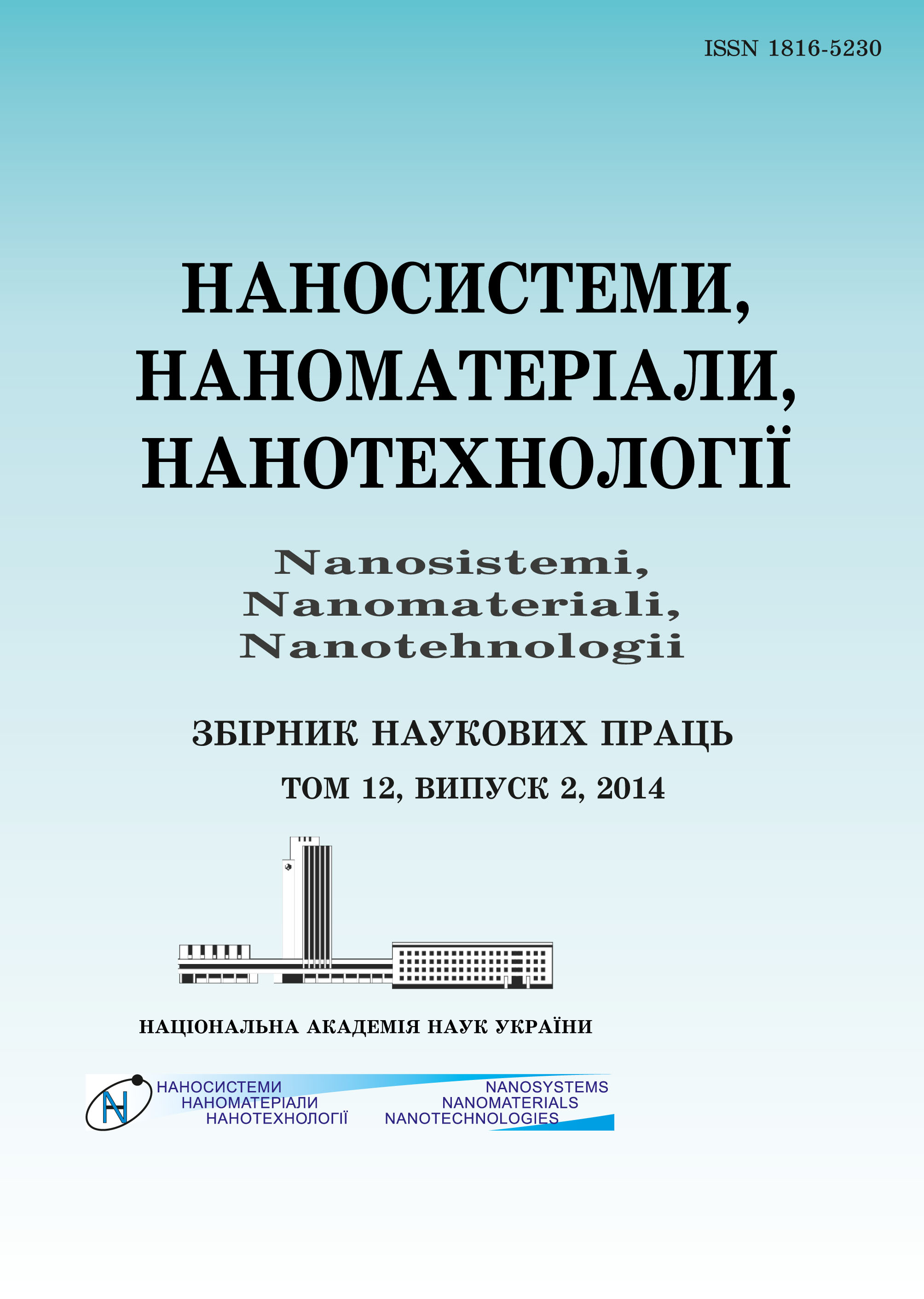|
|
|||||||||
 |
Year 2017, Volume 15, Issue 1 |
|
|||||||
|
|||||||||
Âûïóñêè/2017/òîì 15 /âûïóñê 1 |
V. L. Demchenko
«Features of the Structural Organization and Thermomechanical Properties of Nanocomposites Based on Carboxymethylcellulose, Polyethyleneimine and Cu/Cu2O Nanoparticles»
163–173 (2017)
PACS numbers: 61.05.cf, 61.05.cp, 61.41.+e, 62.23.Pq, 64.70.P-, 82.35.Np, 82.35.Rs
Structure and thermomechanical properties of nanocomposites formed by chemical reduction of Cu2+ cations in polyelectrolyte–metal complexes (PMC) under constant electric field and in absence of field are investigated using WAXS (wide-angle X-ray scattering), SAXS (small-angle X-ray scattering), and thermomechanical analysis methods. It is determined that, as a result of chemical reduction of cations Cu2+ in PMC using NaBH4 (BH4–/Cu2+???4) under an electric-field effect, nanocomposite based on both polyelectrolyte complex CMC–PEI and nanoparticles of Cu/Cu2O is formed, but with greater content of the metallic phase of Cu. As revealed, the CMC–PEI–Cu/Cu2O nanocomposites formed under the effect of constant electric field is characterized by both much higher degree of heterogeneity of structure and smaller values of ranges of heterogeneity and strain.
Key words: polyelectrolyte complex, polyelectrolyte–metal complex, nanocomposite, structure, thermomechanical properties, electric field.
https://doi.org/10.15407/nnn.15.01.0163
REFERENCES
1. V. Demchenko, V. Shtompel, and S. Riabov, European Polymer Journal, 75: 310 (2016). https://doi.org/10.1016/j.eurpolymj.2016.01.004
2. V. L. Demchenko, V. I. Shtompel’, and S. V. Riabov, Polym. Sci., A57, No. 5: 635 (2015). https://doi.org/10.1134/S0965545X15050065
3. V. L. Demchenko and V. I. Shtompel’, Polym. Sci., B56, No. 6: 927 (2014). https://doi.org/10.1134/S1560090414060049
4. H. Palza, Int. J. Mol. Sci., 16: 2099 (2015). https://doi.org/10.3390/ijms16012099
5. A. A. Zezin, Polym. Sci., C58, No. 1: 118 (2016). https://doi.org/10.1134/S1811238216010136
6. V. I. Shtompel, B. S. Sasa, S. V. Riabov et al., Polimer. Zhurn., 32, No. 3: 204 (2010).
7. S. M. Kobylinskyi, S. V. Riabov, and Yu. Yu. Kercha, Vopr. Khimii i Khim. Tekhnologii, No. 5: 28 (2008).
8. O. Kratky, I. Pilz, and P. J. Schmitz, J. Colloid Interface Sci., 21, No. 1: 24 (1966). https://doi.org/10.1016/0095-8522(66)90078-X
9. V. L. Demchenko, Nanosistemi, Nanomateriali, Nanotehnologii, 14, No. 1: 157 (2016).
10. W. Ruland, J. Appl. Cryst., 4, No. 1: 70 (1971). https://doi.org/10.1107/S0021889871006265
11. R. Perret and W. Ruland, Kolloid Z.-Z. Polymere, 247: 835 (1971). https://doi.org/10.1007/BF01500257
12. G. Porod, Small-Angle X-Ray Scattering (London: Acad. Press: 1982).
13. R. A. Lidin, V. A. Molochko, and L. L. Andreeva, Khimicheskie Svoistva Neorganicheskikh Veshchestv: Tutorial for Univ. (Moscow: Khimiya: 1996).
|
©2003—2021 NANOSISTEMI, NANOMATERIALI, NANOTEHNOLOGII G. V. Kurdyumov Institute for Metal Physics of the National Academy of Sciences of Ukraine.
E-mail: tatar@imp.kiev.ua Phones and address of the editorial office About the collection User agreement |